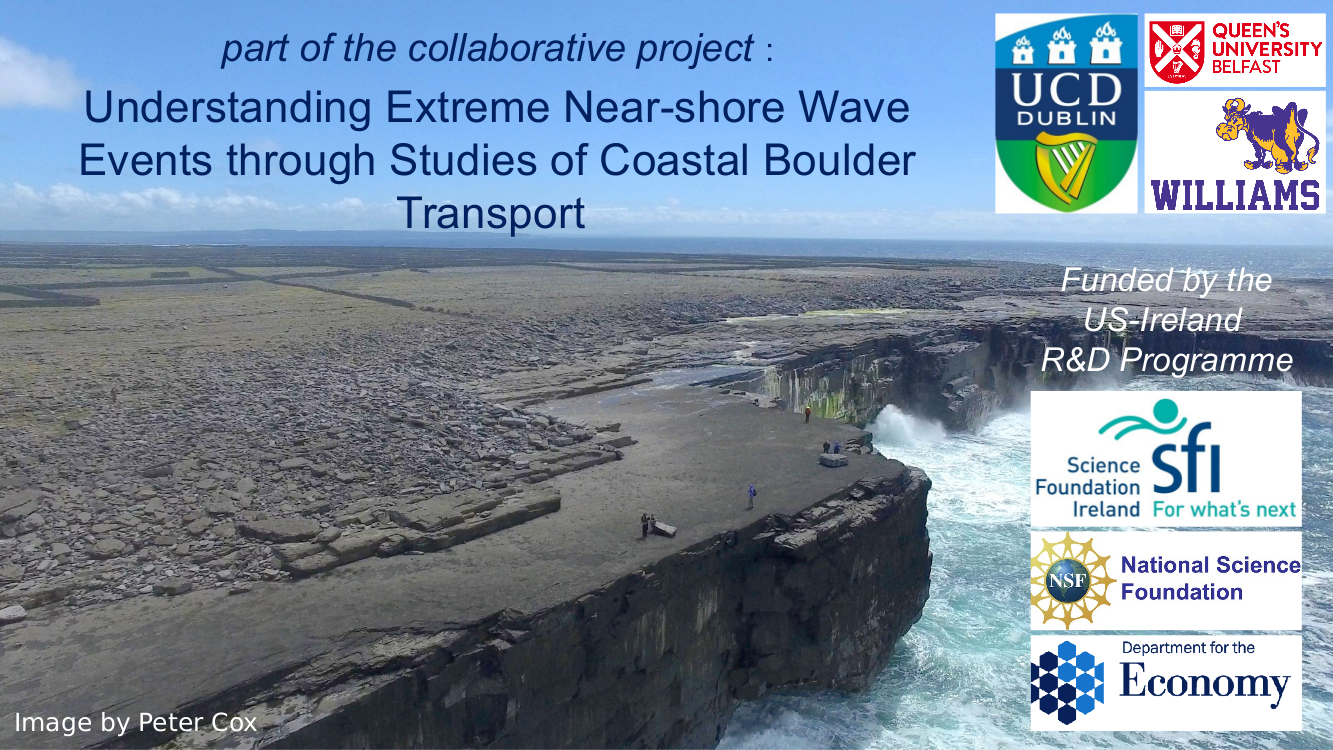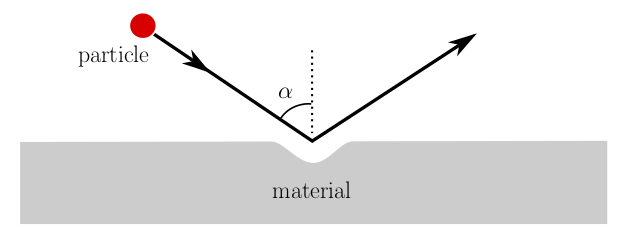Research
My main research interest is in fluid mechanics: geophysical flows, environmental and industrial problems, particulate-laden flows, and transport phenomenon. Flowing water transports material on all scales, from microscopic particles through commercial pipes and porous media to giant boulders on coastal platforms. I model these complex fluids to understand physical processes and improve industrial processes.
Take a look at an introduction to my research topics of boulder transport, water filtration, and erosion.
Publications associated with this research may be found at here.
Boulder Transport
Each winter, storm waves inundate the coastal shores of Ireland. Field evidence on the Aran Islands shows that large boulders (>100 tonnes) are moved during these winter storms. This type of phenomena is often misidentified as tsunami only, with storm waves considered to lack the power and energy necessary to moves these boulders. However, this is anything but the case.

We investigate for extreme near-shore events, such as wave amplification across uneven bathymetries, and the resulting onshore mass transport to model these events. This project is part of a collaboration between the Wave Group at UCD (Nicole Beisiegel and Frederic Dias), Ronadh Cox's group at Williams College, and Pal Schmitt at Queen's University Belfast; a combination of modelling, field work, and experiments. The project was funded by a US-Ireland grant from SFI.
The process of boulder extraction and transport works as follows. Nonlinear interactions between nearshore waves, bathymetry, and cliffs results in extreme wave runup and overtopping of cliffs. Fluid pressure in small cracks is magnified, fracturing bedrock to produce boulders. Large boulders are transported on high-energy coastlines by storm waves.
Water Filtration
Membrane filtration is a simple concept for water purification: water containing particulate contaminants is forced through a semi-permeable membrane that rejects the particulates leaving clean water to flow out. The contaminated feed is split between many individual membrane modules (tubes/channels) that make up the membrane device. The clean water (permeate) is collected, and the left over contaminated water (retentate) may be filtered again. However, particles get stuck in filtration membranes, reducing the efficiency of the system.
We have developed mathematical models of aspects of crossflow and directflow filtration operating at constant flux. We have addressed questions related to the initial stages of concentration polarization in crossflow systems. In particular, we studied the influence of particulates on the viscosity of the filtrate, and showed how the filtration efficiency may be improved by tailoring the wall permeability to reduce the effects of osmosis.
We have also considered the development of membrane fouling and caking in directflow systems: the transmembrane pressure difference, elastic deformations during filtration, and the influence of these on the development of fouling and caking. We have shown that even small elastic effects can worsen fouling and suggested how the process can be operated to avoid this.

This work was with Ian Griffiths and Dominic Vella in the Maths Institute, in collaboration with Robert Field and Nick Hankins at Engineering Sciences, all at Oxford University. We spoke regularly with Graeme Pearce of Membrane Consultancy. My position was funded by OCCAM and Engineering Sciences.
Erosion
Small particles entrained in pipe flow impact walls. However, material is eroded at differing spatial-temporal rates, and becomes exponetially worse. This can be catastrophic for many systems (e.g., cooling systems in tokamaks). We track particles around a bend in pipe flow to determine the location, speed, and incident angle at which they may collide with the pipe wall. Using Finnie's model, we determine the amount of erosion caused by an impact.

This work was with Ian Griffiths in the Maths Institute at Oxford University.